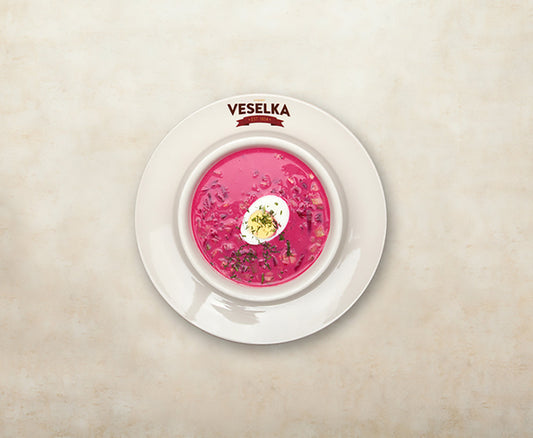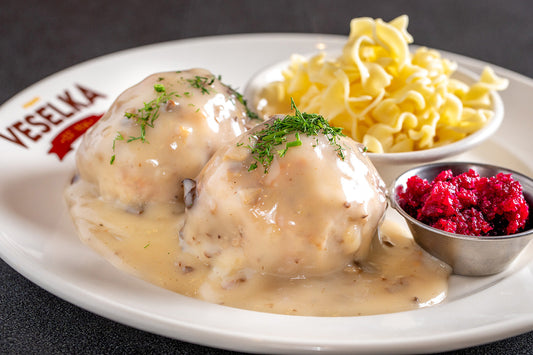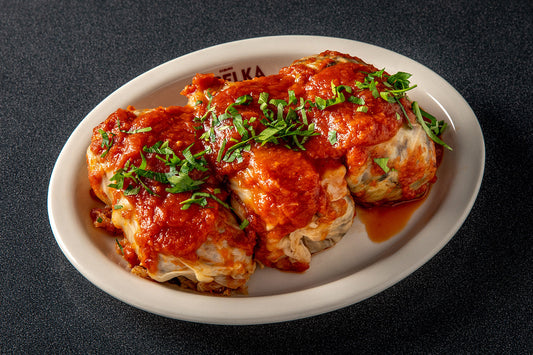Loved by a million hearts, pierogi and gyoza bring a unique cuisine to the world. Both are beloved dishes in their respective cultures that have entered the minds (and kitchens) of food enthusiasts around the globe.
If gyoza stands out with its minced fillings and crispy base, pierogi are well-known for diverse fillings, from sweet to savory, meat to meatless, all with an incredibly tender bite.
But what exactly distinguishes these two signature dishes? To uncover their unique characteristics, let’s delve into the gyoza vs pierogi guide.
What Is a Pierogi?
Pierogi is a truly signature culinary dish, originating from Central and Eastern Europe, specifically Ukraine. These iconic dumplings are created by wrapping hand-made dough around all kinds of fillings, from sweet to savory. Sweet pierogi may contain blueberries, sweet cheese, or fruits, which realize a delightful contrast to their savory counterparts. Savory pierogi, meanwhile, are typically filled with creamy mashed potatoes, tangy cheese, sauerkraut, mushrooms, or meats to give food lovers a rich and satisfying flavor profile.
Pierogi are often boiled until tender and then optionally pan-fried or sautéed to have bites with a crispy, golden texture outside.
Beyond their delicious taste and significance in heritage, pierogi also holds a special place in the hearts of many Ukrainians. It is a dish that has stood the test of time, with family recipes handed down from generation to generation.
What Is a Gyoza?
Gyoza are pan-fried Japanese dumplings with roots in China. The tale goes that the Japanese once tried jiaozi in northern mainland China and decided to bring this delicacy back home. Gyoza is made with a thin dough wrapper and filled with a mixture of minced pork, cabbage, garlic, ginger, and, obviously, soy sauce and sesame oil.
Gyoza is often first fried in a hot pan, which makes it crisp and golden on the bottom and juicy inside. Then, it can also be steamed with a small amount of added water before the pan is covered to steam the entire dumplings quickly. For savory and slightly tangy tastes, Japanese are likely to serve them with a dipping sauce made of soy sauce, vinegar, and chili oil.
Gyoza vs Pierogi: 10 Key Differences
With such similarities, gyoza and pierogi lead many to ponder, “What's the difference between gyoza and pierogi?”
Here, we'll compare them across various differences in taste, fillings, and also cooking methods.
|
Factor |
Gyoza |
Pierogi |
|
1. Origin and Custom |
Japan (influenced by China) |
Central, and Eastern Europe, particularly Ukraine |
|
2. Cultural Significance |
Popular as a street food and side dish |
Traditional comfort food, often served on holidays and family gatherings |
|
3. Main Ingredients |
Ground meat, finely chopped cabbage, nira Japanese chives, garlic, ginger, soy sauce, and sesame oil |
Mashed potatoes, cheese, meat, braised beef, mushrooms, sauerkraut, mushrooms and fruits |
|
4. Dough |
Thin, often made with wheat flour |
Slightly thick, made with wheat flour |
|
5. Filling |
Savory, usually meat and vegetables |
Could be savory or sweet, with various fillings |
|
6. Cooking Method |
Pan-fried, steamed, or boiled |
Boiled, or pan-fried (optional) |
|
7. Serving As |
Main course, side dish, appetizer, or snack |
Main dish, side dish, or even dessert |
|
8. Texture |
Crispy bottom with tender filling |
Soft and chewy, sometimes crispy if fried |
|
9. Size and Shape |
Small, crescent-shaped |
Larger, often half-circular or half-moon dumplings |
|
10. Variations |
Many regional variations in Japan |
Numerous regional and seasonal variations can include sweet versions like fruits |
Gyoza vs Pierogi: Which to Choose?
Although gyoza and pierogi are two unique dishes from different cuisines, they have one thing in common, bringing people together.
These two delicacies bring back the feeling of home with their unique flavors and distinct cultural heritage.
For those who seek a heartier, more comforting Ukrainian culinary experience, pierogi would be the ideal choice. Their savory and sweet fillings make them perfect for any meal, from breakfast to dessert.
Have a taste of home with Veselka’s best options:
- Sauerkraut & Mushroom Pierogi: Treat yourself to a delicious blend of garden vegetables. The taste of tangy sauerkraut and savory mushrooms nestled within your favorite dough will surely make your mouth water.
- Potato Pierogi: An all-time favorite enjoyed by generations, and now it’s your turn. Take a bite and experience the creamy mashed potatoes melts in your mouth, reminding you that sometimes, the best flavors come from the simplest ingredients.
- Short Rib Pierogi: Rich and savory, this pierogi’s irreplaceable taste has won countless hearts and souls with its tender shredded beef perfectly seasoned and stewed in port wine.
FAQs
1. What is the difference between gyoza vs dumplings?
The main difference between gyoza and dumplings lies in their origin, wrappers, and cooking style. Gyoza are Japanese dumplings inspired by Chinese jiaozi, typically made with thinner wrappers and finely minced fillings, then pan-fried for a crispy bottom and steamed top. Dumplings is a broader term that includes various styles from around the world, like Chinese jiaozi, Korean mandu, or European pierogi. They can be boiled, steamed, pan-fried, or deep-fried. Gyoza are a specific type of dumpling with distinct Japanese preparation and seasoning.
2. Are gyoza and jiaozi the same thing?
Gyoza and jiaozi are similar but not exactly the same. Gyoza are the Japanese adaptation of Chinese jiaozi. Both are dumplings with meat and vegetable fillings, but gyoza typically have thinner wrappers, finer fillings, and are often pan-fried, while jiaozi can be boiled, steamed, or fried and have slightly thicker wrappers.
3. What's the difference between a pierogi and a dumpling?
Pierogi are a specific type of Eastern European dumpling, typically filled with ingredients like potatoes, cheese, meat, or fruit, and then boiled or pan-fried. "Dumpling" is a broad term for filled or unfilled dough pieces found in many cultures, including pierogi, gyoza, and wontons. All pierogi are dumplings, but not all dumplings are pierogi.
Veselka’s Best Tastes
In the delightful world of dumplings, the differences between gyoza vs pierogi highlight the unique charm of each dish.
Gyoza calls Japan home and gives food lovers a crispy, savory experience with its delicate dough and flavorful fillings, while pierogi brings hearty comfort with its rich, satisfying varieties that are hard to match.
At Veselka, the spotlight is on pierogi, where tradition and taste come together beautifully.
Visit us today to enjoy the most authentic and heavenly pierogi, and experience the true essence of this timeless dish.





